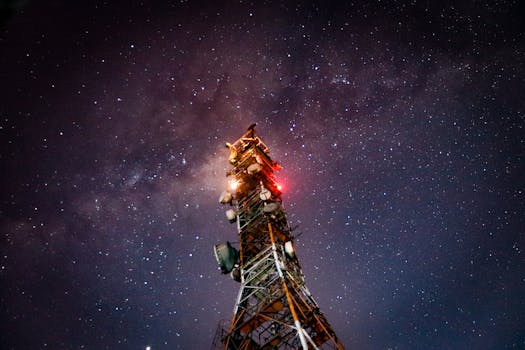MEO Satellites: Revolutionizing Global Communication with Medium Earth Orbit Technology – MEO satellites

MEO Satellites: Revolutionizing Global Communication with Medium Earth Orbit Technology – MEO satellites
MEO satellites, or Medium Earth Orbit satellites, are a type of satellite that operates in an orbit between 2,000 and 36,000 kilometers above the Earth’s surface. This orbit is higher than Low Earth Orbit (LEO) satellites but lower than Geostationary Orbit (GEO) satellites. MEO satellites are designed to provide a balance between the benefits of LEO and GEO satellites, offering faster and more reliable connections than traditional GEO satellites.
The use of MEO satellites is becoming increasingly popular due to their ability to provide global coverage with fewer satellites than LEO constellations. This makes them an attractive option for companies looking to provide satellite-based services such as broadband internet, navigation, and communication. One of the key advantages of MEO satellites is their ability to provide a lower latency than GEO satellites, which is critical for applications that require real-time communication.
How MEO Satellites Work
MEO satellites work by transmitting and receiving signals to and from Earth-based stations. They are equipped with transponders that amplify and re-transmit the signals, allowing them to communicate with multiple stations simultaneously. The signals are transmitted on a specific frequency band, which is allocated by regulatory bodies such as the International Telecommunication Union (ITU).
MEO satellites are typically launched into orbit using a rocket, and once they reach their desired orbit, they deploy their solar panels and antennas. They are powered by solar energy and have a lifespan of around 10-15 years, depending on the design and mission requirements. The satellites are controlled by a network of ground stations that monitor their performance, adjust their orbit, and upload new software and commands as needed.
Applications of MEO Satellites
MEO satellites have a wide range of applications, including broadband internet, navigation, communication, and Earth observation. They are particularly useful for providing connectivity in remote or underserved areas where traditional terrestrial infrastructure is lacking. For example, MEO satellites can provide internet access to rural communities, enabling them to access online services, communicate with others, and participate in the digital economy.
MEO satellites are also used for navigation, providing location information and timing signals to GPS receivers on the ground. This is critical for applications such as aviation, maritime, and land transportation, where accurate navigation is essential. Additionally, MEO satellites can be used for communication, providing voice, video, and data services to users around the world.
Benefits and Challenges of MEO Satellites
MEO satellites offer several benefits, including faster and more reliable connections than traditional GEO satellites, lower latency, and global coverage with fewer satellites than LEO constellations. However, they also pose some challenges, such as higher launch costs than LEO satellites, complexity of operation, and interference from other satellites and terrestrial systems.
Despite these challenges, MEO satellites are an attractive option for companies looking to provide satellite-based services. They offer a balance between the benefits of LEO and GEO satellites, and their global coverage and low latency make them ideal for applications that require real-time communication. As the demand for satellite-based services continues to grow, MEO satellites are likely to play an increasingly important role in the future of global communication.



